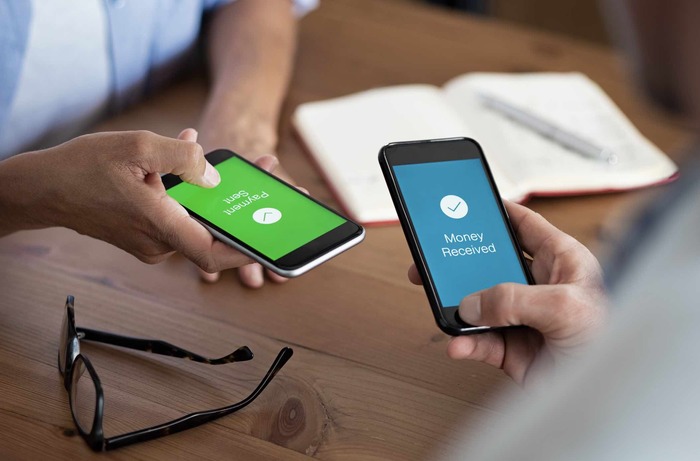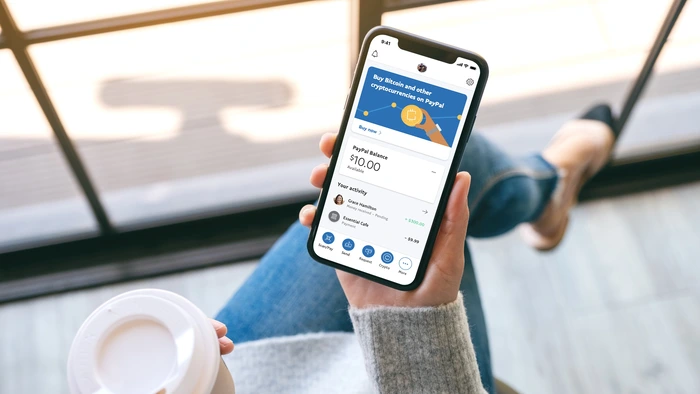P2P payment apps are on the rise across the world. Almost half a trillion dollars were transacted using a P2P payment application in 2021 alone. This marked the increase in sent payment values by 59% whereas the increase in overall transaction volume was about 49%.
Before the advent of P2P payment apps like Paypal and Venmo, people used to send money using cards but now everything is done online with a few clicks. P2P payment applications are so convenient for people, that it has started influencing the entire fintech market.
However, financial software development is not easy. You need to consider the requirements of the users, employ the right technology for the project and develop a quality product. Even after that, you have to continuously offer maintenance services, regular updates, and more. A reliable and reputed financial software development firm can help you with all of it.
But before you go out hiring developers and shopping for technologies, you need to know how a P2P payment app is created. That’s what we are discussing in this article along with the challenges you might face during development and how to avoid them. So, let’s get started now, shall we?
A step-by-step guide to P2P payment app development
Developing a custom peer-to-peer payment app can be challenging but if you have identified all your requirements and set your priorities straight then things might get easier. There isn’t a fixed way to do this but the basic steps in app development remain the same.

Choose a P2P payment app type
Two types of Payment applications exist; a standalone app and a banking services app. The first type of application only offers services related to making financial payments and other transactions. Meanwhile, the latter option is available by banks and fintech companies that aim to offer banking services digitally to provide an enhanced digital banking experience to their clients. You have to choose what kind of application you wish to develop or what kind of app your targeted customers would prefer.
Prioritize mobile platform
You have to identify your users and then determine what mobile platform they prioritize. Based on that you have to select the platform, it could be iOS, Android, or even Hybrid. The mobile platform you choose will have the maximum effect on your costs, i.e. budget.
Define the flow of P2P app features
Remember what I said earlier about getting your priorities straight? It was about what type of services, what kind of features, and functionalities you prefer to include as the basics of your payment app. In this phase, you have to determine how your application will function, and how each feature will work including the entire workflow of your application.
You can create an MVP that consists of all the basic features of your P2P payment application. Release it for the beta users to gather feedback and improve upon it. And once you enhance your application, you can launch it with additional features and functionalities.
Build a user-friendly interface and UX
Any application with a bad user interface is never going to be successful in the market. Your customers must enjoy using your application and for that, you must offer enhanced UI and UX. Also, the app shouldn’t be hard to navigate. If the users face any difficulties in finding their preferred options or features, they would stop using your app altogether.
The users also wouldn’t like to spend time learning how your app works. So everything must be simple enough for the users to get it right in one go. So don’t make your UI and UX complicated, just keep it simple. You can hire financial software development services providers as they can help you create UI and UX that your targeted customers might prefer or enjoy. Thus, increasing your app’s chances of success.
Consider all security issues
Security is the primary concern of every software product. And when you are building a payment app, it’s not just you but also your users who will rely on your app’s security measures to protect their financial transactions and sensitive financial information.
So, it is of utmost importance that you implement strong security measures like implementing biometric security such as fingerprint scanners, and face recognition. You can also employ two-step verification methods for logging in to the app and making financial transactions.
Two-step verification is considered to be one of the most secure and effective methods to protect the financial transactions of your app’s end-users. You can add multiple layers of protection as well like SMS verification, password authorization, and more.
Conduct proper testing
Testing your application is the most integral aspect of the software development lifecycle. It helps you measure whether your developed product can work up to expectations or not, whether it can fulfill the users’ requirements or not.
It is widely accepted practice in the software industry to test your applications at every stage of the development process. It is also important to involve QA analysts in the ideation stage so they can know what is to be expected from the app.
And when automation testing is done alongside development, programmers can write code that can pass the test. And because tests are based on user requirements. The developed product will be up to expectations. Don’t forget to test every functionality and feature of the application. And ensure that the right measures are in place for users to perform a secure financial transaction.
FinTech app legal compliance
If you are creating a fintech application, you must follow PCI-DSS or Payment Card Industry Data Security Standard. Your app must also comply with all the requirements of PCI-DSS. You would also need a PCI-DSS certificate to launch your app. This certificate would help create trust and transparency among your users.
Challenges in P2P payment app development
No road to software development success is a smooth one. You ought to face challenges. Success depends upon a single fact; how you tackle them. To help you successfully develop a P2P payment app, we will now discuss a few common challenges that developers face during the development process. We will divide these challenges into two categories:
- Technical
- Non-technical
Technical challenges
Security
The biggest challenge you will ever face with a payment app is security. Hackers are known to target national and international platforms. In the past, payment apps such as Paypal, NIC Asia Bank, and Cash App were hacked. And since these apps were used widely, the amount of confidential data they possessed was enormous, all of which came at risk when the app was hacked.
Even if the app doesn’t get hacked, the financial information the app contains is so sensitive that it has to be protected with foolproof security. And as a P2P payment service provider, that responsibility falls on your shoulders,

Comply with PCI DSS
As we already discussed, the most important thing to do while developing a fintech app is to comply with all the PCI-DSS standards. Otherwise, you won’t be permitted to launch your app in the market. Their basic criteria include:
- You must have a security system and network in place
- The networks must be monitored and maintained regularly
- Protect confidential information
- Continuous testing
- Update all the security policies
- You must imply a vulnerability management system
- Build strong access control standards
Currency conversion
Many P2P payment service providers face the challenge of converting currencies in real-time. Because there are more than 180 countries with different currencies as well as different currency rates. And if you are providing peer-to-peer payment services then it is expected that you offer cross-border transaction services where payments are drones within a shorter time frame.
Non–technical challenges
Regional limitations
As there is a problem with currency conversion, another common problem that payment service providers face is that they are limited by their geographical restrictions. If you want to establish your company as a top P2P payment app in the world then you have to move past those geographical constraints.
The cases of dispute
A dispute occurs in the payment applications when a sender has sent some money to say her friend and the money is deducted from the sender’s account but the friend has not received any money to say so. Such disputes happen sometimes so it is a problem that both developers and the owners of the app have to keep in mind while developing as well as maintaining the P2P payment application.
Slow-changing mindset
Although there is a rise in the users of P2P applications as they are more convenient. Many still prefer to do it the traditional way; i.e. using physical cash. Not everyone tends to change their habits whenever a new trend arrives. So yes transforming the way people make transactions is slow but progressive. The main concern behind the use of payment apps is that their financial data might get hacked.
Conclusion
Fintech is transforming the way payments are made, especially national and international payments. And people are slowly transitioning from their traditional brick-and-mortar banks and cash transactions to online payments, payments apps, and digital money.
So, it is safe to say that the future of peer-to-peer payment apps is safe. With the help of the best financial software development company, you can invest your time and efforts in creating P2P payment apps.
It is still a niche so technological innovations and transformation ought to happen in the future. But you can manage to adapt them if you already have a reliable app and an established client base.
